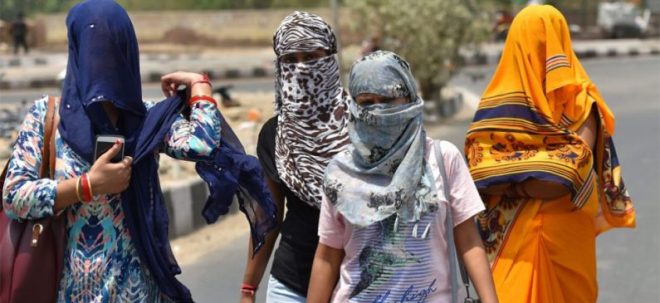New Delhi: A hotter-than-normal summer is expected in 2023 with temperatures likely to reach 2-3 degree celsius above normal in some parts of Indo-Gangetic plains and eastern India during the last week of March, the India Meteorological Department (IMD) told a high-level meeting on Tuesday. At the review meeting, chaired by Cabinet Secretary Rajiv Gauba here, the IMD said above-normal maximum temperatures are likely over most parts of the northeast, east, and central India and some parts of northwest India.
Temperatures could be 2-3 degree celsius above normal in some parts of Indo-Gangetic plains and eastern India during the last week of March, the IMD informed the meeting convened to review preparedness for the ensuing summer and mitigation measures.
Read More: ‘Withdraw notice on One Rank One Pension arrears’: Supreme Court to Defence Ministry
The cabinet secretary noted that since a hotter-than-normal summer is expected, states and union territories need to be adequately prepared to meet the associated challenges, according to an official release.
The IMD made a presentation on the global weather phenomena and the temperature outlook for the period from March to May. A forecast for the second fortnight of March was also provided. Minimum temperatures are more likely to be above normal over most parts of the country except south peninsular India, where normal to below normal temperatures are likely.
The IMD further informed that no significant heat waves are expected during the remainder of March. Secretary of the Department of Agriculture and Farmers’ Welfare informed that Rabi crop condition is normal as on date and the production of wheat is expected to be about 112.18 MT, the highest ever.
Secretary of the Ministry of Health and Family Welfare informed that the National Action Plan on Heat-Related Illness (NAP-HRI) released by the ministry in July 2021 outlines the challenges posed by a heat wave, heat-related illnesses, and their management from primary to tertiary level.
He advised the states to review health facility preparedness in terms of essential medicines, intravenous fluids, ice packs, ORS, and drinking water. Director General (Forests) in the Ministry of Environment, Forests, and Climate Change outlined the action plan and preparedness for forest fire management.
Read More: 1984 Bhopal Gas Tragedy: SC Dismisses Centre’s Plea For Additional Compensation To Victims
The Union home secretary outlined the efforts made by the Ministry of Home Affairs and the National Disaster Management Authority and informed that the National Guidelines for Preparation of Action Plan for Prevention and Management of Heat Waves was issued in 2016 and revised in 2017 and 2019.
Power Secretary emphasized the need to complete all maintenance activities in power plants by March 2023. He also requested Punjab and Rajasthan to augment the production of coal by captive power plants.
Secretaries in the departments of Drinking Water and Sanitation, Water Resources, River Development and Ganga Rejuvenation, and Animal Husbandry and Dairying outlined the suggested measures related to drinking water, irrigation, and fodder.
Gauba noted that the central ministries and departments have been closely engaging with the states and Union territories to ensure optimal preparedness levels and for implementing timely mitigation measures.
He requested chief secretaries to review the preparedness for a likely heat wave with the relevant departmental secretaries and the district collectors. Gauba assured the states that central agencies will continue to closely coordinate with them and will continue to be available for necessary assistance.





































